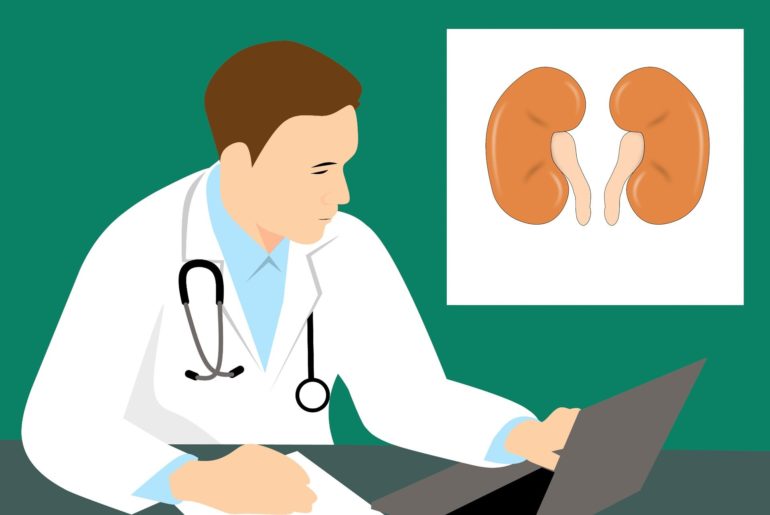A new collaborative study from researchers at the Geisel School of Medicine at Dartmouth and the University of Washington (UW) and published in the Proceedings of the National Academy of Sciences (PNAS), reveals unexpected insights into how skin exposure to ultraviolet (UV) light can worsen clinical symptoms in autoimmune diseases such as lupus.
Lupus, an autoimmune disease that can cause inflammation of the joints, skin, kidneys, blood cells, brain, heart and lungs, is caused when the immune system attacks its own tissue.
Previous research has established that in up to 80 percent of lupus patients, sunlight exposure can trigger both local skin inflammation and systemic flares, including kidney disease. But little has been understood about the underlying mechanisms that drive this process.
To define how UV light triggers kidney inflammation, the research team investigated the role of neutrophils—a type of white blood cell abundantly found in the body that acts as a first responder to any kind of inflammation and has been linked to skin and kidney tissue injury in lupus patients.
In the study, the researchers looked for markers of inflammation and injury in the skin, the blood, and the kidney at different time points following UV light exposure in mice. They were able to demonstrate that neutrophils not only infiltrated the UV light-exposed skin, but also dispersed throughout the circulatory system and migrated to the kidney.
“Interestingly, one subset of these neutrophils, the ones that we think are more damaging, first went to the skin that was exposed to the UV light and then turned around and went to the kidney,” says Sladjana Skopelja-Gardner, Ph.D., an assistant professor of medicine at Geisel who worked with Keith Elkon, MD, at UW on the study. “That’s a bit unusual—we normally think of neutrophils as short-lived cells that sort of zoom to where the inflammation is and then die off there.”
The investigators found that a single exposure of skin to UV light stimulates inflammatory and injury processes in the kidney, including transient proteinuria, even in normal, healthy mice.
“To be clear, normal, healthy mice don’t get the clinical type of kidney disease that you see in lupus patients,” explains Skopelja-Gardner. “They get what we call subclinical injury, meaning there is an inflammatory and injury process happening in the kidney that is not visible by pathology or looking at the tissue itself. The mice recover and are fine afterwards.
“However,” she adds, “this subclinical injury may lead to pathologic consequences in the vulnerable setting of pre-existing inflammation in lupus patients, and lead to kidney disease flare after exposure to sunlight.”
Importantly, the inflammatory and injury markers they detected in the mouse kidneys following UV light exposure were very similar to the renal injury markers that are associated with more severe kidney damage in lupus patients. In addition, the exposure to UV light also triggered an immune response that is often expressed in most lupus patients—the type 1 interferon response—in both the skin and kidney.
“Overall, I think what our research demonstrates is that skin exposure to UV light can be the source of inflammatory pathways that are relevant to lupus, and that neutrophils play an important role as a pathogenic mediator in this process, contributing to kidney damage,” says Skopelja-Gardner.
Drug shows promise in reversing kidney damage caused by lupus (Update)
More information:
Sladjana Skopelja-Gardner et al, Acute skin exposure to ultraviolet light triggers neutrophil-mediated kidney inflammation, Proceedings of the National Academy of Sciences (2021). DOI: 10.1073/pnas.2019097118
Provided by
The Geisel School of Medicine at Dartmouth
Citation:
Study reveals new insights into the link between sunlight exposure and kidney damage (2021, January 21)
retrieved 21 January 2021
from https://medicalxpress.com/news/2021-01-reveals-insights-link-sunlight-exposure.html
This document is subject to copyright. Apart from any fair dealing for the purpose of private study or research, no
part may be reproduced without the written permission. The content is provided for information purposes only.



